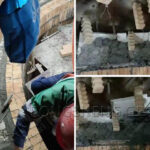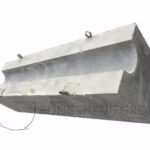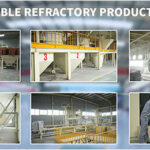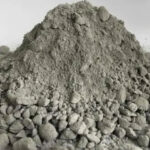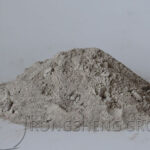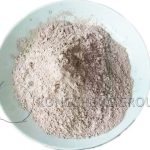With the continuous improvement and development of the glass furnace structure, the variety and demand of zirconia ramming materials are increasing. Domestic manufacturers of zirconia ramming materials have swarmed, forming a wave of production of zirconia unshaped refractories.
Zirconia Unshaped Refractories
Zirconia unshaped refractories can be divided into two categories: zirconia slurry and zirconia ramming material. Zirconia ramming materials are divided into two types: zirconite and zirconia alumina. The former is to add a certain proportion of crushed sintered zircon brick pieces to the zirconia mortar powder to form granular aggregates. The latter is added with granular aggregate after the fused corundum brick is broken. When using the above two ramming materials, add an appropriate amount of industrial phosphoric acid (H3PO4) with a concentration of 85%. After mixing, make the ramming materials wet and loose, and then ramming. After high-temperature sintering, it becomes a solid whole.
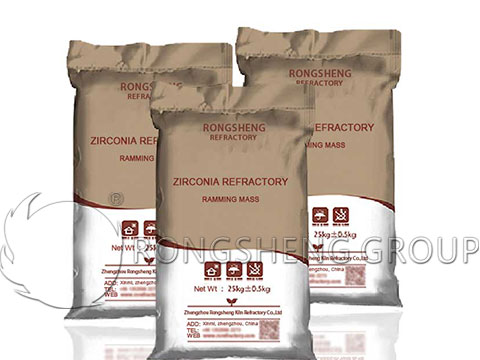
Application of Zirconia Ramming Material in Glass Kiln
Among different zirconia ramming materials,
- Some are zirconia ramming materials with aggregates. It is mainly used for the bottom ramming layer in the kiln for melting borosilicate glass.
- Some are zirconia -alumina ramming materials. It is mainly used to melt the bottom ramming layer of soda-lime-silica glass, electric vacuum glass, and other alkaline glass furnaces.
- Some belong to zirconia mortar. It is mainly used for mortar joints of zircon bricks or transition layers.
- Some are intermediate repair materials. It is mainly used for repairing any refractory material that is not in contact with the molten glass in the flame space after corrosion.
- There is also a mixture of ramming materials and intermediate repair materials.
Although the above-mentioned zirconia refractories have different uses, different chemical compositions, and various specifications, they are all called ramming mass refractory materials. Therefore, it often creates illusions for users. The manufacturer of Rongsheng refractory castables materials manufacturer reminds all customers that in the construction process, the wrong type should be avoided and the wrong place of the zirconia refractory ramming material should be avoided. So as not to cause the “ramming material” to peel off or be mixed in the glass liquid, causing stones and bubbles in the product. In severe cases, the glass furnace is damaged prematurely.
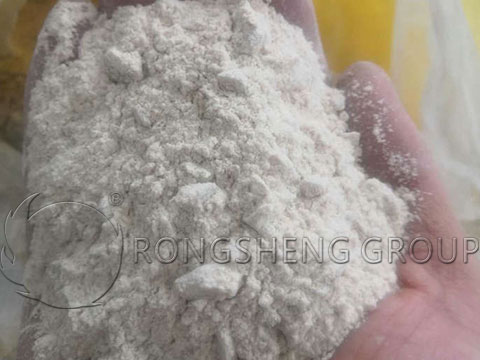
The Curing Mechanism of Zirconia Unshaped Refractories
Both zirconia ramming material and zirconia refractory mortar use phosphoric acid as a binding curing agent. Both types of powders contain AL2O3. When phosphoric acid (H3PO4) is added, H3PO4 reacts with AL2O3 to form AL(H2PO4)3 at 150°C. ALPO4 is formed at 236℃ and then combined with ZrO2 in zircon sand to generate Zr(H2PO4)4, Zr(HPO4)2, and Zr3(PO4)4. At 300℃~340℃, compounds such as ZrP2O7 are formed to cause bonding and solidify. When the temperature continues to rise to 1520~1550°C, decomposition occurs again to produce (ZrO) 2P2O7+P2O5. Among them, the phosphoric acid is completely volatilized at this temperature, so that the zirconia amorphous refractory material becomes a solid and integral hard block. Therefore, it is necessary to empty the furnace and heat the kiln to make the furnace bottom temperature exceed 1550°C.
Rongsheng Refractory Materials Manufacturer
Rongsheng is an experienced refractory manufacturer. Rongsheng’s refractory materials have been recognized by customers in more than 60 countries around the world. For example, Thailand, UAE, Turkey, Kuwait, South Africa, Malaysia, Vietnam, Netherlands, Philippines, Singapore, Egypt, Russia, etc. Rongsheng’s refractories have also served many glass furnace projects. Learn more about zirconia refractory bricks and zirconia unshaped refractory products for glass kilns. Please contact us. We will provide you with services according to your specific needs.

